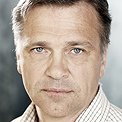I have had the pleasure to take part for the work of ISTAG which is a European board advising the European Commission on the information society and innovation issues. Our advisory board has now reached phase where we have compiled 10 recommendations in preparation of the Commission's proposal for the next EU Framework Programme.
The recommendations you will find here. Here I would like elaborate a bit of my thoughts on the recommendations and on what the European information society should look like in the future in my view.
It’s quite difficult to understand recommendations just reading the paper, which to me it is a bit unclear and does not show clear vision for Europe. Infrastructure and social innovation seems to be new buzz words together with old one ICT – do we understand those words same ways? What are political consequences of those recommendations?
Anyhow discussions in ISTAG plenary and working groups have been very inspiring. I have felt that we all members agreed that we are in middle of transformation/systemic change. However, do these ten recommendations help in this transformation or are they just incremental improvements?
The 21st century global context is increasingly uncertain, rapidly changing and complex, features which confound and disrupt previously coherent frameworks, provoking distress in the external and internal worlds and the relationship between them. Therefore Recommendation #10 action is needed to embrace ambiguity and unpredictability to me is the most important to cope with this transformation.
Other elements which could be emphasized in the document are (1) demand-side of innovation, (2) integral technology/human centric thinking and (3) open society:
Increasing demand-side of innovation funding
Demand-oriented and demand-creating technological and social innovations have premium in the future because they can solve the science ‘chasm’. Policy makers will have to focus on the changing nature of demand and, hence, individual well-being from which it stems. User-centric perspective will be outdated but only because it is a too narrow a view of human beings, their needs, contexts and practices. A new, more holistic human-centric perspective will offer huge value-creation opportunities. Infra will be an important facilitator of everyday life but not the key driver of change. That will be the changes in demand. First industrial revolution was driven by basic physiological needs and textiles, second by material needs and durables, the future by increasingly intangible mental needs (love & belonging, social esteem, self-actualization, meaningfulness, mental coherence). Technological research needs to be integrated with humanistic and social research in order to understand what technology can contribute in everyday life.
We need a human-centric innovation approach –not just science-technology push
The human being is radically real, enactive, embodied and holistic: technologies for better life and wellbeing cannot effectively be actualized in the real world until a naturalization and humanization of technology and the human subject in particular occurs. During modernity, the industrialization of the human soul went far enough thanks to (social) science’s marginalization of the lived human experience and the creative human impulse. The academy must develop a more sensitive ethic recognizing the embodied unity of humanity, nature and technology if it is to claim relevance in our shared postmodern transitional era.
Embracing openess
Open society is based on open markets, open innovation and open data. In complex and human centric world especially public institutions should change their role in society from controlling to more enabling role. This is possible with new ICT enabled co-creation processes and tools and with open data.
